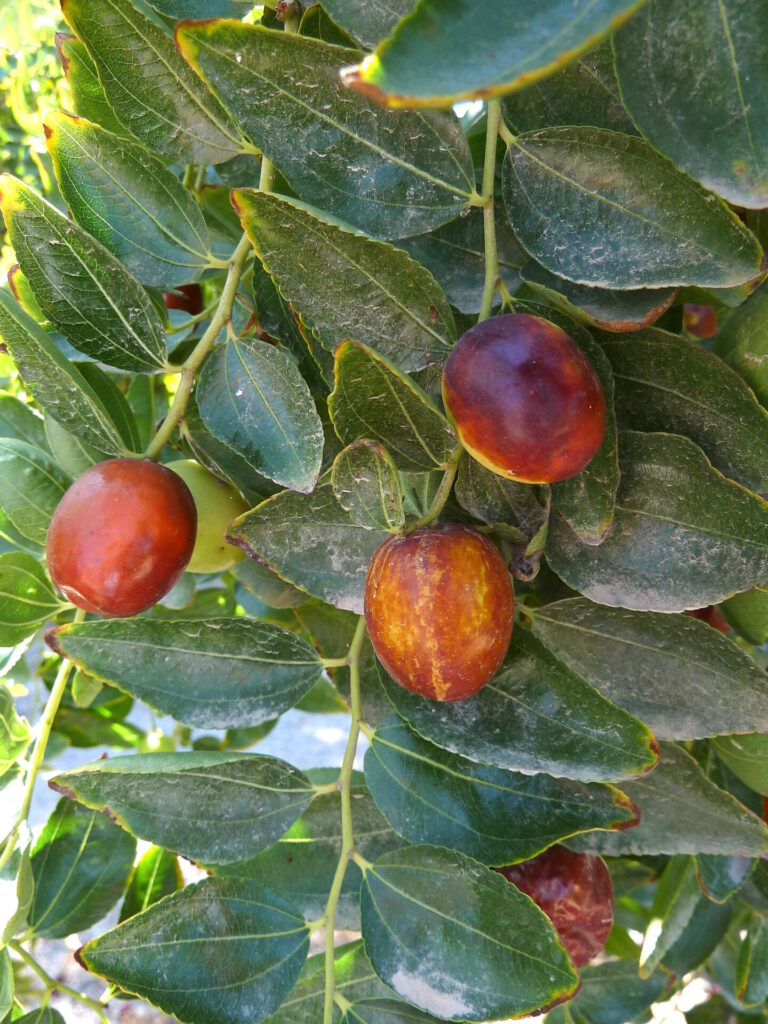Sharp thorns on many cultivars.
Prune fruit trees in the Winter to maintain size and shape to prepare for Spring growth. Thin the
tree in the Summer, and remove excess fruits. Remove any dry twigs and branches. Cut off any
new growth below the graft or very low in the tree, this will direct the plant’s energy to its main
branches. Thin your trees during the Spring and Summer seasons to ensure the plant’s energy is
directed as desired. If the plant provides an overly large quantity of fruits for that branch, reduce
the quantity of fruit so that what remains grows larger. This will also prevent broken limbs.
Harvest ripe fruit to prevent undesired pests.
The timber is sometimes used for small items, such as tuning pegs for instruments. Select grade
Jujube timber is often used in traditional Asian instruments for fingerboard, pegs, rests &
soundposts, ribs & necks etc. It has a medium to hard density similar to luthier grade European
maple and has excellent tonal qualities. Jujube Wood can be found in local folk instruments from
Ceylon / India thru to China / Korea and it is also commonly used in China in violin & cello making
for overseas export, though usually stained black to imitate the look of ebony. Luthier grade
jujube wood planes and carves beautifully.
Both the Li and the Lang varieties should be grafted as they do not come true to seed:
Li Jujube – a popular cultivar, produces large, round fruit that can weigh up to 3 oz. Good picked at
the yellow-green stage and eaten fresh. (also reported as the best flavored).
Lang Jujube- another very popular variety that produces large pear-shaped fruit. For this variety it
is best to eat dried fruit. (produces a more spreading tree than other jujube trees).
Honey Jar Jujube- the fruit is round to elongated and small to medium sized. Excellent for fresh
eating, this jujube is very sweet and crisp. (tree grows to 20 feet).
Shanxi Li Jujube- the most popular fresh eating variety in China. Medium to large fruit that has a
sweet apple flavor. (very productive tree).
Many countries have their own names for this tree: Cottony Jujube, Desert Apple, Azufaifo Indian
Cherry, Datte Chinoise Indian Date, Indian Jujube, Indian Plum, Jujuba, Malay Jujubeberra (Pashto),
Badari, Ber, Beri, Filzblattrige Jujube, Chinese Apple, Hong Tsao, Sanebuto-natsume, Cherumali,
Dadara, Elandai, Perita Haitiana, Coolie Plum, Annab, Innab.






